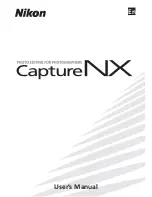
Appendix D. An Introduction to Disk Partitions
91
Keeping this in mind, we recommend that, unless you have a reason for doing otherwise, you should at
least create the following partitions:
swap
,
/boot/
(or a
/boot/efi/
partition for Itanium systems)„
/boot/efi/, and
/
(root).
For more information, refer to Section 4.17.4
Recommended Partitioning Scheme
.
Caution
Make sure you read Section D.1.9
One Last Wrinkle: Using GRUB or LILO
— the information there
applies to the
/boot/
partition!
D.1.9. One Last Wrinkle: Using GRUB or LILO
GRUB and LILO are the most commonly used methods to boot Red Hat Enterprise Linux on x86-
based systems. As operating system loaders, they operate "outside" of any operating system, using
only the Basic I/O System (or BIOS) built into the computer hardware itself. This section describes
GRUB and LILO’s interactions with PC BIOSes and is specific to x86-compatible computers.
D.1.9.1. BIOS-Related Limitations Impacting GRUB and LILO
GRUB and LILO are subject to some limitations imposed by the BIOS in most x86-based computers.
Specifically, some BIOSes cannot access more than two hard drives, and they cannot access any data
stored beyond cylinder 1023 of any drive. Note that some recent BIOSes do not have these limitations,
but this is by no means universal.
Tip
While partitioning your hard drive, keep in mind that the BIOS in some older systems cannot access
more than the first 1024 cylinders on a hard drive. If this is the case, leave enough room for the
/boot
Linux partition on the first 1024 cylinders of your hard drive to boot Linux. The other Linux partitions
can be after cylinder 1024.
In
parted
, 1024 cylinders equals 528MB. For more information, refer to:
http://www.pcguide.com/ref/hdd/bios/sizeMB504-c.html
All the data GRUB and LILO need to access at boot time (including the Linux kernel) is located in the
/boot/
directory. If you follow the partition layout recommended or select automatic partitioning,
the
/boot/
directory is in a small, separate partition. Otherwise, it may reside in the root partition
(
/
). In either case, the partition in which
/boot/
resides must conform to the following guidelines if
you are going to use GRUB or LILO to boot your Red Hat Enterprise Linux system:
On First Two IDE Drives
If you have 2 IDE (or EIDE) drives,
/boot/
must be located on one of them. Note that this
two-drive limit also includes any IDE CD-ROM drives on your primary IDE controller. So, if
you have one IDE hard drive, and one IDE CD-ROM on your primary controller,
/boot/
must
be located on the first hard drive
only
, even if you have other hard drives on your secondary IDE
controller.
Содержание ENTERPRISE LINUX 3 - FOR X86-ITANIUMTM-AMD64 AND INTEL EXTENDED MEMORY 64 TECHNOLO
Страница 6: ......
Страница 12: ...vi Introduction ...
Страница 70: ...58 Chapter 4 Installing Red Hat Enterprise Linux ...
Страница 92: ...80 Appendix C Troubleshooting Your Installation of Red Hat Enterprise Linux ...
Страница 112: ...100 Appendix G Additional Resources about Itanium and Linux ...
Страница 118: ......
Страница 120: ...108 ...















































